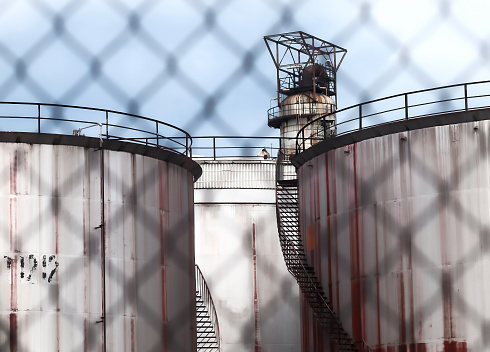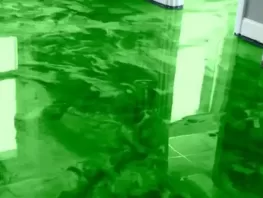
Prevent Storage Tank Corrosion with Protective Lining
Posted May 09, 2022 by Dave Scaturro

Industrial sites all around the country agree that corrosion is one of the costlier issues they face in their facilities. Averaging hundreds of billions of dollars a year, corrosion related expenses are a serious problem. Here’s the good news: corrosion is preventable if you follow tried-and-true maintenance techniques such as the application of protective coatings.
Protecting storage tanks from corrosion prevents leaks as well as consequent environmental disasters, fires, explosions, workplace injuries, unexpected downtime, and costly repairs. One way of offering protection is to select the coatings and application techniques that are most effective for your storage tank.
Advantages of Tank Lining
Identifying the solution to any problem requires an understanding of the problem and its origin. In broad terms, corrosion refers to the deterioration of metals as a result of their reaction with the environment. When corrosion takes a hold of any storage tank, you must know that its contents – things like produce, potable water, chemicals, crude oil, clean petroleum products and other substances – tend to undergo a chemical reaction when they come into contact with the surface of the tank, causing them to corrode and rust from the inside out.
Tank lining can be the solution not just for addressing existing corrosion but for preventing it in the first place. It represents a process through which coating products are applied to the interior of storage tanks and are often used to protect tanks from corrosion-related damage and deterioration of its structural integrity.
Protective linings not only keep your storage tanks fully operational, a high-quality, anti-corrosion lining can significantly decrease general maintenance costs and extend the lifespan of your storage tanks and other storage solutions, including silos, bins, and containers. In addition, most tank linings have antifungal and antibacterial properties. As a result, they can inhibit the growth and proliferation of microorganisms, preventing premature spoilage along with the potential health and safety risks associated.

Types of Linings for Storage Tanks
There are a number of available tank liners in the market. Here’s a breakdown of the common types and their strengths:
Epoxy
Epoxy tank coatings are made from epoxy material, which can be developed to be chemical-resistant. They are strong linings that are aggressive and capable of working under high-temperature environments. Epoxy is moisture tolerant and solvent-free, making it an obvious choice for water tanks.
Epoxy linings come in three basic formulations: Epoxy Novolac, Bisphenol A, and Bisphenol F. Each has specific advantages. Epoxy Novolac exhibits excellent chemical resistance, while Bisphenol F offers more versatile functionality, and Bisphenol A is characterized by higher viscosity and improved resistance to high temperatures. Epoxy Novolac is also solvent free, which makes it an excellent choice for environmentally friendly projects.
Polyurethane
Polyurethanes have been engineered to resist numerous chemical and mechanical stressors, including abrasion, puncture, and corrosion. They are excellent at protecting against different elements by being very durable even in the most extreme environments. They are ideal for concrete-made structures and fall somewhere in the middle in terms of flexibility, though they’re certainly more flexible than other options.
Fluoropolymers
Fluoropolymers are characterized by a low friction coefficient, high-impact tolerance, good tensile strength, and excellent resistance to corrosion, permeation, abrasion, and high temperatures. They’re very effective at lining storage tanks as well as other elements, such as transport vessels and pipes.
Vinyl Ester
Vinyl ester liners are made from vinyl material and provide some of the highest resistance to chemical infiltration and contamination. This material has found extensive use in most chemical industries because of its high resistance to temperature and chemical damage.
Cementitious Liners
There are two common types of cementitious linings, which include epoxy and polymer modified cementitious linings. These materials find common use in the lining of concrete tanks used in water treatment and to safely contain chemicals. These linings are ideal for waterproofing underwater retaining or collection structures.
Zinc Tank Liners
A zinc-made tank liner has zinc silicate material and is anti-corrosive. Its additives and binders can act as effective waterproofing material. This material has zinc dust levels of a high percentage. These liners give a zinc-to-zinc contact with cathode-like protective layers like some that occur in a galvanizing process. These linings are non-porous, which makes their cleaning a little challenging. However, they can still safely contain chemicals.
Multiple factors must be considered when preparing tank surfaces and applying linings. For this reason it’s important to hire a qualified industrial painting contractor that specializes in coating inspection, failure analysis, surface preparation, lining application, and site maintenance. With over 45 years of experience, Alpine Painting has the knowledge and skilled industrial painters to complete your project on time and within your budget.









